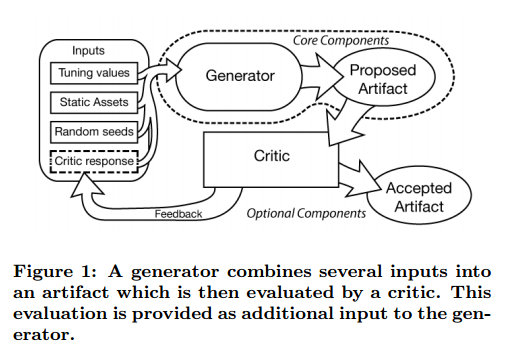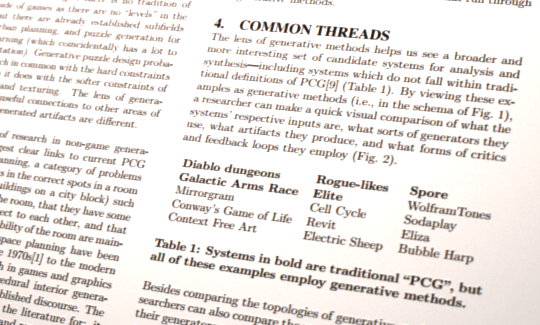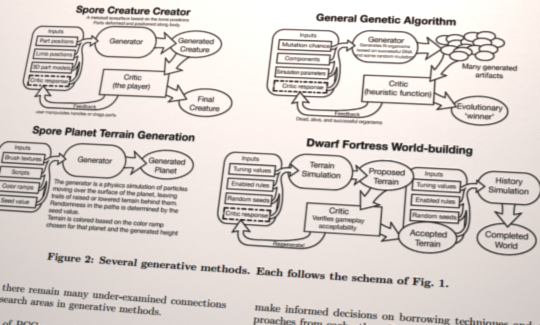


Generative Methods (2013)
The primary argument of this paper presented at the PCG in Games Workshop 2013 by Kate Compton, Joseph Osborn, and Michael Mateas is that “Procedural Content Generation” is a somewhat misleading term. They propose that academic research instead should use the term “Generative Methods” to match the way that other fields talk about generative art.
I don’t disagree: the name of the blog doesn’t have “content” anywhere near it, and I go out of my way to talk about generative stuff that might not fit whatever strict label of PCG there might be. Don’t limit your vision of what you can use for inputs and outputs. Better art comes through absorbing lots of influences: things from related fields, ideas from nature, inspirations from philosophy. While the exact name doesn’t matter as much from a popular perspective, researchers should be aware of the vocabulary. (And you should use “generative” as a search term too.)
“Generative Methods” didn’t quite catch on as a name: the sixth workshop, held this past June, was still called PCG 2015.
More importantly, the paper proposes a model for how generative methods work in general: a set of inputs that feed into a generator, which proposes an artifact. The artifact might be used as-is, evaluated by a critic, or fed into yet another generator as input. This is a useful way to think about generators as you are designing them.
Lastly, the paper has a brief look at generative systems and what they have in common. Some of these things we’ve talked about before, but I find the list of issues illuminating: granularity, expressive range, adaptive features, and hard and soft failures probably deserve more discussion.
http://www.fdg2013.org/program/workshops/papers/PCG2013/pcg2013_6.pdf
